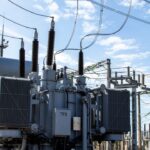What is the difference between cat 5 & Cat 6 cabling? These cables have the same functions, but they are designed differently. Crosstalk can cause data loss and slow speeds. Cat 5 and cat six cables are specially designed to reduce noise in your system.
Cat5e
If you’re looking to upgrade your network, it’s essential to understand the differences between cat 5 & Cat 6 cabling. CAT5e cabling handles low-bandwidth applications, while CAT6 is built for high-bandwidth applications. The primary difference between the two is the bandwidth supported. In general, CAT6 cabling supports data rates up to 200 MHz, while CAT5e is limited to 100 MHz.
Cat6 cables are more durable than Cat5e cables and can handle higher bandwidth. In addition, they offer lower crosstalk and interference because they are manufactured with tighter tolerances. These cables can also handle Gigabit, a rate that is the best choice for high-speed networks.
Cat6 cabling uses a copper-based twisted pair for the signal. As a result, this cable has higher performance levels than its predecessors and can accommodate Gigabit Ethernet networks up to 100 meters. It is also characterized by a higher number of pairs of twisted wire, making it an ideal choice for high-speed networks such as 10GBit. Additionally, unlike its predecessor, Cat5e, Cat6 also allows two-way communication on each pair.
Cost
If you’re planning to install networking cables in your home or business, you need to know how much they cost. Cat 5 ethernet cables are generally less expensive than Cat 6 ethernet cables. The price range for Cat 5e cables is $0.10 to $0.20 per foot, while Cat 6 ethernet cables range from $0.25 to $0.35 per foot. However, Cat 6 cables have a higher bandwidth than Cat 5e cables, so they’re better for future-proofing your network.
Cat6 cables offer superior data transfer rates and are more flexible, allowing them to handle a more significant volume of traffic. This means that they’re ideal for high-volume networks that use a great deal of data. However, they’re also more expensive than Cat5e cables.
Cat5e cables are the least expensive and most common type. They provide high-speed networks, enabling users to transfer four signals at once. Cat5e cables are available in the solid conductor and stranded forms. Solid conductor versions are better for wall-mounted installations and provide better shielding.
Durability
The durability of cat 5 & Cat 6 cabling is determined by how well they transmit data. The higher the speed of data transfer, the better the cable. Cat 5 cabling is suitable for low-speed data transmission, but if you need more efficiency, choose Cat 6.
Cat5 and Cat 6 cabling differ in their construction and performance. The former has improved system noise and crosstalk performance, while the latter has improved performance and insulation. In addition, the newer versions of these cables have increased crosstalk resistance, improved shielding, and twisted cable designs.
Cat 6a cables have double the bandwidth of Cat 5. As a result, they can maintain higher transmission speeds over long distances. In addition, these cables are shielded and have a thick cable sheath.
Performance
Cat 5 & Cat 6 cabling are very similar in performance, but there are differences. The main difference is in the transmission performance. CAT6 features a thicker gauge and tighter twist to reduce interference and transmit data faster.
Although there are several differences between these two types of cabling, cat5 is cheaper and suitable for home or office use. Cat6 is more expensive and offers a higher speed at longer distances. It is also more future-proof. Both types of cables are made of twisted pairs of copper wires. Twisted pairs of copper wires minimize the amount of crosstalk between cables. They also use spline technology to reduce system noise.
Cat6 can handle up to 1000 Mbps, roughly equivalent to one Gigabit per second. For most internet users, this is more than enough. However, only some people have internet connections that reach this speed.








